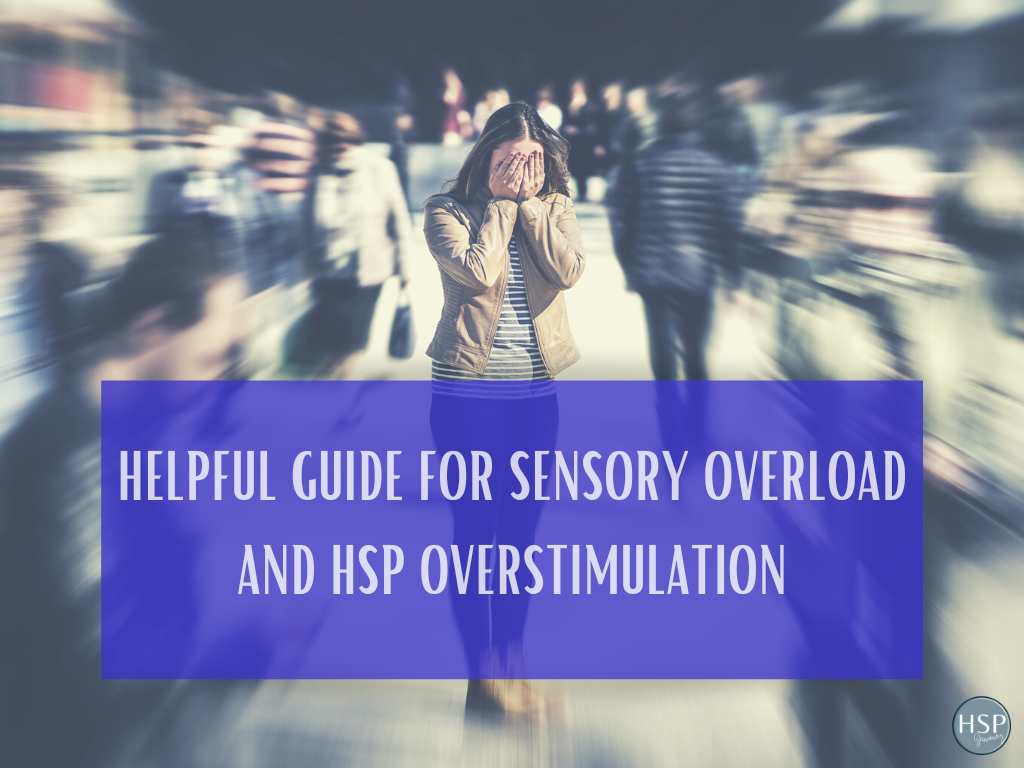Struggling with sensory overload in the hustle and bustle of everyday life can be a challenge, but the book, “Too Loud, Too Bright, Too Fast, Too Tight,” offers a ray of hope for sensitive people who struggle with HSP overstimulation. It’s refreshing to find a resource that truly understands the sensory defensive experience. From personal anecdotes to practical tips, this book offers valuable insights into managing a world that often feels overwhelming.
Diving into the pages of “Too Loud, Too Bright, Too Fast, Too Tight,” you’re greeted with real-life scenarios that resonate with anyone facing sensory processing difficulties. While the book illuminates challenges that adults and children face, it offers strategies for navigating an overstimulating world that make it a game-changer for highly sensitive people looking for ways to adapt their environments to suit their highly sensitive needs.

Table of Contents
Bottom Line About Book, “Too Loud, Too Bright, Too Fast, Too Tight”
For anyone seeking to navigate the sensory loudness of life, “Too Loud, Too Bright, Too Fast, Too Tight” is an essential guide. Filled with comforting advice and understanding, it’s like having a wise friend by your side. Ready to take control of your sensory world? Click here to grab your copy of the book and transform the way you perceive the world around you.

Overview of ‘Too Loud, Too Bright, Too Fast, Too Tight’
When you pick up this insightful guide, it feels as if it was written for those who perceive the world with heightened sensitivity. The insights shared in this 400-page book resonate with anyone who finds daily stimuli—be it noises, lights, or fast-paced environments—overwhelming. Released by Harper Perennial in December 2003, this resource seems to be a beacon of understanding, offering a sense of validation and practical advice to those grappling with sensory defensiveness.
Readers have reported a profound sense of relief after diving into its pages, finding it extremely valuable not only for children with sensory processing disorders but for adults as well. It unlocks a deeper understanding of sensory overloads and provides you with strategies for managing sensitive responses to the world around you, which many have found to be game-changing.
Without promising miracle cures, it equips you with an arsenal of tools to better navigate the often overwhelming rush of everyday life. Its impact is evident in how it’s cherished by both individuals dealing with sensory defensiveness and those supporting them. While it’s packed with information that might require you to take notes, the consensus from the community is clear: it’s a must-have for anyone looking to thrive in a world that sometimes just feels like too much.
Navigating the world with sensory sensitivities related to the highly sensitive person trait can seem like an overwhelming journey. It’s refreshing to find a resource like “Too Loud, Too Bright, Too Fast, Too Tight” that truly understands what you’re going through. Let’s explore how this book can be a game-changer in your everyday life, offering tools and reflections that help you manage a world that often feels too intense.
Impact on Daily Living for Those with HSP Overstimulation
This book isn’t merely a read; it’s a companion that walks with you through your daily routines. By discussing real-life situations and providing practical advice, it aids in transforming your day-to-day experiences from stressful to manageable. Here’s how it has made a difference:
- Helps identify sensory triggers in common settings.
- Offers simple, actionable coping mechanisms for everyday tasks.
- Encourages creating personal routines to minimize sensory overload.
Strategies for Sensory Overload for Those with HSP Overstimulation
Sensory overload can stop you in your tracks, but the book offers survival strategies to regain control. These strategies are not about avoiding life, but about embracing it on your terms:
- Breathing techniques and focus exercises to ground you in moments of high stress.
- Tips for recognizing the onset of sensory overload before it peaks.
- Customizable solutions to help you prepare for challenging environments.
Guidance for Supportive Environments for HSP Overstimulation
Your environment plays a massive role in sensory processing. This section is a treasure trove of suggestions for crafting spaces that help rather than hinder. You’ll find insights on:
- Organizing your home or workspace for reduced sensory input.
- Selecting materials and textures that soothe rather than stimulate.
- Adjusting lighting and sound to create a calming ambiance.
Insights on Adult Sensory Processing
Understanding the “why” behind your responses to the world can be profoundly liberating. This book goes beyond the ‘what’ and ‘how’ to offer deep insights into adult sensory processing:
- Breaks down complex neurological concepts into digestible explanations.
- Provides a framework for self-reflection to better understand personal sensitivities.
- Presents relatable scenarios that validate your experiences with sensory challenges.
Each section of “Too Loud, Too Bright, Too Fast, Too Tight” unfolds another layer of understanding, right from recognizing your sensory patterns to shaping your surroundings to support you. Whether you are seeking solace from the sensory storm or looking for ways to express your needs to others, this book stands as a gentle guide in your quest for comfort and self-advocacy.

Looking for an HSP-Trained coach to help you align your life with your priorities?
Through my Highly Sensitive Person (HSP) certification with the Nickerson Institute, as well as being an HSP, I offer HSP coaching to develop specific goals around your HSP needs. We HSPs frequently deal with anxiety and overstimulated nervous systems that prevent us from achieving peace and attaining our life goals. HSP coaching with me includes a detailed review of your sensitivities and a mutually-desired plan for growth and management of this superpower to shift negativity and begin seeing yourself as the hero of your own story.
Understanding the HSP Trait, or Sensory Processing Disorder
The HSP trait’s clinical name is Sensory Processing Sensitivity (SPS). It is not a disorder, it is a personality trait. Many people are diagnosed with Sensory Processing Disorder, and this book can prove to be a helpful guide for those struggling with this diagnosis. Sensory Processing Disorder (SPD) can make a bustling grocery store feel like a minefield. Too Loud, Too Bright, Too Fast, Too Tight” offers insights that many find invaluable in navigating a world that often feels unforgiving for the senses. Through its pages, you’ll discover why those tags on clothes can be maddening or why a gentle hug might sometimes feel like too much.
The book does an exceptional job of explaining SPD in clear terms without overwhelming you with jargon. It extends a helping hand to adults and children alike, providing strategies to manage daily life and improve overall comfort. Although the journey with sensory sensitivity is uniquely personal, readers often express a sense of relief and recognition in reading about experiences that mirror their own.
While the book doesn’t claim to have a magical cure, it equips you with tools to make life a bit more bearable. You’ll learn to make note of what seems to help and what to avoid, crafting a more personalized and manageable existence. Through real-world examples and practical advice, “Too Loud, Too Bright, Too Fast, Too Tight” feels like a conversation with a knowledgeable, empathetic friend who really gets it.
Customer Reviews for “Too Loud, Too Bright, Too Fast, Too Tight”
With a solid average rating of 4.6 stars from over 450 owners, this guide resonates with folks who experience sensory overload. Picture this: you’re diving into a book that feels like it just gets you, especially if bright lights or loud noises easily overwhelm you. Users are expressing genuine relief and an eye-opening moment as they flip through its pages. Many tout it as incredibly informative—valuable for both adults and children who are sensitive to sensory input. Parents of highly sensitive children particularly praise the book for its insights and practical advice.
It’s not just a hit with those experiencing sensory issues themselves, but also with readers looking to support loved ones. While some find the wealth of information a bit much to digest in one go, suggesting it’s better to take it slow and absorb the tips gradually, the overall consensus shows that it’s an essential read. There’s no mention of a one-size-fits-all solution here, but readers appreciate the variety of strategies outlined to tackle daily sensory challenges.
The feedback loop is consistent: this isn’t just a book but a tool and a source of validation for many. People who have struggled silently with sensory challenges are finding recognition and understanding, making the guide a coveted companion in their journey toward a more comfortable life.
Take Aways for Sensitive People with HSP Overstimulation
If you’ve ever felt bombarded by the world around you as a sensitive person with HSP overstimulation, “Too Loud, Too Bright, Too Fast, Too Tight” could be a game-changer in understanding your sensory thresholds. After spending some time with this book, it’s clear that it offers valuable insights for those who experience sensory overload—whether for themselves or someone they care about. You’ll find personal stories that resonate and practical advice to navigate daily life more comfortably. While the book doesn’t provide a cure-all solution, it equips you with strategies that can help manage sensitivity to stimuli.
Although the content is dense, making notes while reading could enhance your understanding. This is not a light read, but the depth of information mirrors the complexity of sensory processing issues. It successfully bridges the gap for adults dealing with sensory defensiveness, a topic that often goes underrepresented. Thank you to the author for shedding light on this subject and offering support to those who may have previously felt isolated by their experiences.
Frequently Asked Questions
Finding the right strategies to navigate our busy world can be especially challenging for those who experience sensory overload. If you’re someone who feels overwhelmed by the volume and intensity of daily life, or you’re a parent of a sensitive child, you’re not alone. Let’s explore some helpful insights and tips that can provide relief and improve everyday experiences.
What strategies can a highly sensitive person (HSP) use to manage overstimulation?
- Create a Calm Oasis: Designate a peaceful space in your home where you can retreat when feeling overwhelmed.
- Wear Comfortable Clothing: Opt for soft fabrics and non-restrictive clothing to reduce tactile discomfort.
- Mindful Breathing: Use deep breathing exercises to center yourself during high-stress moments.
- Limit Stimuli: When possible, avoid environments with excess noise, lights, or crowds.
- Plan Downtime: Incorporate regular breaks into your schedule to rest and decompress.
How can parents help their highly sensitive child cope with overstimulation?
- Observation: Learn to identify your child’s signs of overstimulation early on.
- Routine: Establish predictable routines that can provide a sense of security.
- Empathy: Validate your child’s feelings and experiences to foster trust and understanding.
- Controlled Exposure: Gradually introduce new stimuli in a controlled manner to build tolerance.
- Calm Techniques: Teach your child calming techniques like visualization or quiet play to self-soothe.
Are there natural remedies that can help a highly sensitive person with sensory overload?
- Herbal Teas: Sipping chamomile or peppermint tea can be soothing and help reduce stress.
- Essential Oils: Aromatherapy with scents like lavender may have a calming effect.
- Diet: Maintain a balanced diet. Some find reducing sugar and caffeine intake helpful.
- Physical Activity: Gentle activities like yoga or walking can help release tension.
- Touch: Therapies such as massage or weighted blankets might provide comfort and reduce anxiety.
What symptoms indicate that a highly sensitive person is experiencing overstimulation?
Symptoms can vary, but common ones include:
- Irritability: Quick to frustration or anger in response to stimuli.
- Fatigue: Feeling unusually tired or drained due to sensory input.
- Anxiety: Increased worry or fear when faced with overwhelming environments.
- Avoidance: Withdrawal from social situations or certain places to escape stimuli.
- Physical Symptoms: Headaches, nausea, or dizziness as a direct response to sensory challenges.
How can a highly sensitive person develop coping skills to handle overwhelming situations?
- Self-Awareness: Understanding your triggers is the first step toward managing them.
- Boundaries: Learn to say no and set limits on your time and energy.
- Positive Self-Talk: Replace negative thoughts with kind and encouraging words.
- Seek Support: Connect with communities or professionals who understand sensory processing.
- Practice: Regularly engage in coping strategies to strengthen your resilience to overstimulation.
Remember, while the world can often be a cacophony of sights, sounds, and sensations, finding your unique path to managing and thriving as a sensitive person with HSP overstimulation is not only possible but also deeply rewarding. Whether it’s through creating personal sanctuaries, embracing calming practices, or fostering understanding and support, there’s a multitude of ways to make life more enjoyable and less overwhelming.
Be sensitive, be free
*This post contains affiliate links and I will be compensated if you make a purchase after clicking on my links*




[…] the fear of social situations might be more pronounced for you due to a natural tendency to become overstimulated in busy environments. This can limit your social interactions and hinder the development of new […]